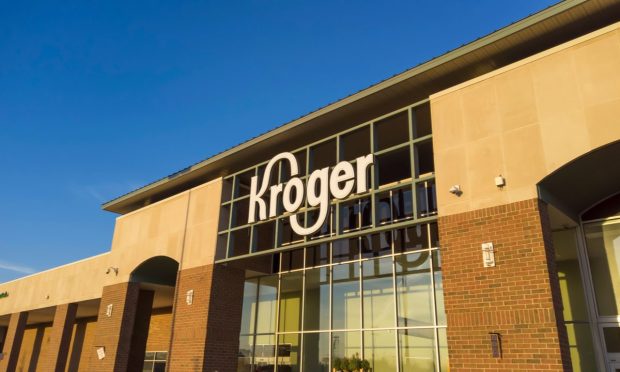Kroger Leverages Automated Warehouses to Expand Its US Reach as Grocers Eye Robotic Distribution

Grocery’s robotic transformation is speeding along rapidly. Kroger, the largest pure-play grocer in the United States, is leveraging automated technologies to expand to new markets and to bolster its presence in existing ones. Through its partnership with United Kingdom grocery technology company Ocado, Kroger plans to leverage automated warehouses to build an eCommerce business that will serve “tens of thousands” of new customers in Florida, CNBC reported Thursday (Nov. 4), and to establish a presence in the Northeast’s tri-state area.
Kroger and Ocado first inked their deal, the U.K. eGrocer’s first partnership in the U.S., in the spring of 2018. The site for the first of their joint automated fulfillment centers, which Kroger calls “sheds,” in a suburb of Cincinnati, was chosen later that year and opened in April 2021, with more locations on the way.
The Context
While the concept itself of automated fulfillment centers is not new, grocers began increasingly turning to these technologies following the rise in online ordering seen throughout the pandemic. Grocery giants ranging from Boise, Idaho-based Albertsons Companies to the Netherlands’ Ahold Delhaize, among smaller players, have been turning to micro-fulfillment centers (MFCs), mini warehouses that fulfill several thousand orders per week, to boost their fulfillment capabilities.
Read more: Albertsons Builds Out MFC Technology
Ahold Delhaize Banks On Grocery’s Post-COVID eCommerce Future
By the Numbers
These investments in locations that exclusively fulfil digital orders make strategic sense, given the rise in eGrocery. Research from PYMNTS census-balanced survey of over 5,000 U.S. consumers published in the report, The Bring-It-To-Me Economy: How Online Marketplaces And Aggregators Drive Omnichannel Commerce, created in collaboration with Carat by Fiserv, found that 46% of consumers are buying groceries online more often than before March 2020, and that figure rises to about six in 10 for Generation Z consumers, millennials and bridge millennials.
See also: Bring-It-To-Me Economy Ascends As Consumers Embrace Home-Centric Lifestyles
Additionally, research from PYMNTS’ study “What Consumers Expect From Their Grocery Shopping Experiences,” a collaboration with ACI Worldwide, finds that consumers are likely to maintain these behaviors, since they are no longer motivated just by safety concerns but also by factors that will persist even once contagion fears subside completely. Per the report, 76% of online grocery shoppers report that they do so because it is easier and more convenient than shopping in stores, and 57% because it is faster.
You may also like: Digital Features Can Help Grocers Win Over 43 Percent Of Shoppers
What Insiders Are Saying
Once established, automated distribution centers allow grocers to meet the soaring demand for online grocery far more quickly and efficiently than traditional methods, especially in the face of today’s challenging labor market.
“Micro-fulfillment is central to our expansion strategy and underscores our industry innovation,” FreshDirect Chief Operating Officer Timothy Knoll told PYMNTS in an interview. “The technology allows us to turn our existing regional facilities into high-velocity automated distribution centers, speeding our expansion and growth into in our existing service footprint.”
Related news: FreshDirect Looks To Micro-Fulfillment For Post-Pandemic Expansion
These automated efforts come at a time when traditional, consumer-facing stores can no longer support the demand for eCommerce fulfillment.
“COVID [has] caused a lot of grocers to examine and reexamine [their] strategies,” Colman Roche, vice president of eCommerce and retail at logistics solutions provider Swisslog, told PYMNTS. “They’ve been going through the process of trying to get pickers into stores and react, but they run very quickly into congestion problems within stores, which scares regular customers.”
For more: MFCs Shift Focus Of Online Grocery To Long-Term Growth
